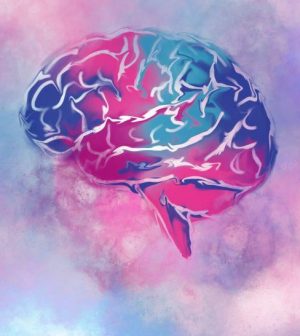- How Daily Prunes Can Influence Cholesterol and Inflammation
- When to Take B12 for Better Absorption and Energy
- Epsom Salts: Health Benefits and Uses
- See What Saffron Can Do for Sleep and Heart Health
- 6 Common Mistakes to Avoid Before Your Physical
- Can Sweating Really Help You Beat a Cold?
- Strengthening Your Relationship: Practical Strategies
- Skip Storing This Everyday Product in the Fridge Door
- Green Tea + B3 Pairing May Boost Brain Health
- Navigating Your Midlife Crisis: Embracing New Possibilities
Cellular ‘Fix’ Treatment Shows Promise Against ALS in Small Study

Researchers have made early progress toward a new approach to treating the deadly brain disease amyotrophic lateral sclerosis (ALS): using patients’ own immune system T cells.
ALS is a rare condition that kills nerve cells in the brain and spinal cord that control movement. Over time, it robs people of their ability to move, talk, eat and breathe.
There is no cure, and people with ALS typically die of respiratory failure within three to five years. The condition is commonly called Lou Gehrig’s disease, after the baseball player who died of it in 1941.
In the new study, researchers tested an experimental treatment that focuses on regulatory T cells, or “Tregs.” They are a type of immune system cell that normally help suppress excessive inflammation in the body.
Research has shown that Tregs lose that capability in certain diseases, including ALS. And that Treg dysfunction is thought to accelerate ALS progression.
So the hope is that restoring Treg function early in the course of ALS could help stabilize the disease, explained Dr. Jason Thonhoff, lead researcher on the new study.
He and his colleagues have been developing a process aimed at doing just that: They remove Tregs from ALS patients’ blood, expand the cells in the lab over a period of a few weeks, then infuse them back into patients’ bodies.
They’ve found that there is nothing inherently wrong with patients’ Tregs, explained Thonhoff, a neurologist at Houston Methodist Hospital Research Institute.
He said that removing the cells from the “toxic” inflammation that marks ALS is one part of restoring their function; the process of expanding them in the lab further improves their inflammation-suppressing ability.
In a previous study of three patients, the researchers found that the approach was safe and reduced markers of inflammation in the patients’ bodies.
Building on that, this latest study involved seven patients who were randomly assigned to either undergo the same procedure or receive placebo (inactive) infusions, every four weeks for six months. After that, six patients, along with an additional two, moved into an “open-label” study, where all received monthly Treg infusions for another six months.
The therapy also involved skin injections of a drug called IL-2, a synthetic form of a natural immune system protein. Patients took those injections three times a week.
In the end, the treatment again proved safe. And blood tests showed that it restored some of Treg cells’ ability to suppress inflammation.
“This is giving more evidence that this approach is feasible and well-tolerated,” said Kuldip Dave, senior vice-president of research for the nonprofit ALS Association, which helped fund the study.
Dave said it also appears that the tactic “does what it’s supposed to do” — boost normal Treg function.
The big question is whether that slows ALS progression. Of the eight patients followed over a year, six showed slow progression or none at all.
However, Dave urged caution in interpreting results from such a small patient group.
Thonhoff agreed, but added that his team was “excited” by the findings in the six patients. A larger study is planned, he said.
Dave noted there was no evidence the treatment worsened ALS progression.
“There were no deleterious effects, which is important,” he said.
No one is claiming that a Treg-based therapy could cure ALS. Thonhoff said the hope is to stabilize patients’ course, and improve and extend their lives.
But if the approach is shown to do that, it would not be a simple treatment: The functional Tregs do not last long in the body, and infusions have to be repeated.
Thonhoff acknowledged the real-world obstacles, but said there would be ways to make the regimen less onerous for patients. They could, for instance, have their Tregs collected at their local medical center and then sent for processing — maybe needing to do that once or twice a year.
Thonhoff and Dave both pointed to another possibility: Could Tregs be taken from healthy donors, to create an “off-the-shelf” supply for ALS patients?
But those are long-range questions. At this point, Thonhoff said, his team hopes to start a larger trial by the end of next year, depending on funding.
Right now, three ALS drugs are approved in the United States, including one that got the green light just last month. That drug, called Relyvrio, was approved based on a small trial suggesting it can extend patients’ lives by about five months.
ALS is a complex disease, and Dave said researchers are still trying to get a handle on the underlying biology.
It may be that combination treatments, taking aim at different mechanisms driving the disease, will be necessary, he said.
The findings were published recently in the journal Neurology: Neuroimmunology and Neuroinflammation.
More information
For more on ALS, visit the ALS Association.
SOURCES: Jason Thonhoff, MD, PhD, assistant professor, neurology, assistant member, Houston Methodist Hospital Research Institute, Houston; Kuldip Dave, PhD, senior vice president, research, ALS Association, Washington, D.C.; Neurology: Neuroimmunology and Neuroinflammation, November 2022
Source: HealthDay
Copyright © 2026 HealthDay. All rights reserved.










